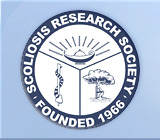From time to time, the National Scoliosis Foundation receives letters from parents about kyphosis. To find out more about this spinal deformity, our Medical Update editor, Nancy Schommer, interviewed Dr. Howard King, Clinical Associate Professor of Orthopaedic surgery, University of Washington, and Northwest Spine and Pediatric Orthopaedic Surgeons Seattle, Washington. What follows are excerpts from that interview.
From time to time, NSF receives inquiries about a condition called flat back syndrome. To find out more about it, Nancy Schommer recently interviewed Michael LaGrone, MD, a scoliosis specialist who has a private practice in Amarillo, Texas. Dr. LaGrone is a member of the Scoliosis Research Society and a medical advisor to the NSF. He is also a member of the clinical faculty of the Texas Tech University Health Science Center.
For the person anticipating scoliosis surgery, it is confusing and sometimes troubling to learn of the wide variety of instrumentation systems that are in use today. Why, the patient wonders, are there so many? How are they different? Which one is best? That last question is the easiest to answer. The fact is there is no one “best” instrumentation for every patient or for every physician. In planning the surgery, the physician takes a number of factors into account: the location and magnitude of the curve, the degree of rotation, the extent of deformity of the individual vertebrae, the rigidity or flexibility of the spine, the density of the bone, and the size of the patient. In addition, the physician may have a personal preference and skill for working with one instrumentation or another.
Continue reading Instrumentation Systems for Scoliosis Surgery
Many adults with scoliosis, including those with prior corrective surgery, are curious about the risks and benefits of exercises and sports participation. In our experiences, most adults with scoliosis have never held discussions with medical professionals about these issues. Research based information about therapeutic or recreational exercise for adults with scoliosis is lacking. The advice expressed in this article will therefore reflect experiences described to us by our patients with scoliosis, and our recommendations to these patients.
Adolescents with scoliosis and their families have questions concerning exercise. These questions are usually about two general areas:
- Can exercise correct or stop the progression of the scoliosis curve?
- Are recreational exercise and sports participation advised?
In this article, we will present some of the advantages and limitations of exercise for adolescents with scoliosis. Adults with scoliosis, including those with corrective surgeries, often also seek advice about exercises, especially if they begin experiencing discomfort and stiffness in their backs. Therapeutic and recreational exercise for adults will be presented in a future article.
From time to time, the National Scoliosis Foundation receives questions from parents about early onset or infantile scoliosis. To find out more about this spinal abnormality, we asked Nancy Schommer, author of Stopping Scoliosis, to interview Dr. Ronald Moskovich, who is Assistant Professor of Orthopedic Surgery at New York University as well as a practicing specialist in spinal disorders at the Hospital for Joint Diseases Orthopaedic Institute in New York City. What follows are excerpts from the interview.
The word “chiropractic” is a compilation of two Greek words which are interpreted to mean “efficient hands”. In 1898 David Daniel Palmer, the originator of chiropractic, set up the Palmer College of Chiropractic in Davenport, Iowa. Today, there are fifteen accredited institutions and programs in the US offering the Doctor of Chiropractic (DC) degree.
Following is an explanation of the nature, practice, and basic theories of chiropractic as defined by the Council of Chiropractic Education, and the Massachusetts Chiropractic Society.
Every year, the National Scoliosis Foundation receives letters and telephone calls from parents of young people who have been told they have a “mild” curvature of the spine. They are concerned and confused. They have been told that treatment is not presently necessary but may be in the future. Parents ask us, “are we to just stand by and watch our child become deformed?” To find out more about such curves, we interviewed Dr. William P. Bunnell, Chairman of the Department of Orthopaedic Surgery, Loma Linda University Medical Center, Loma Linda, California.
by Nancy Schommer, author of Stopping Scoliosis
Because so many adults have contacted the NSF, we asked Nancy Schommer, author of Stopping Scoliosis, to provide us with an update about adult scoliosis. In the course of her research, she interviewed Dr. David B. Levine, Clinical Professor of Orthopedic Surgery at Cornell University Medical College and Director of Orthopedic Surgery at the Hospital for Special Surgery in New York City. Following are excerpts from their conversation.

For more information on finding a specialists near you, please visit the Scoliosis Research Society website.
Scoliosis Research Society Specialist Finder








